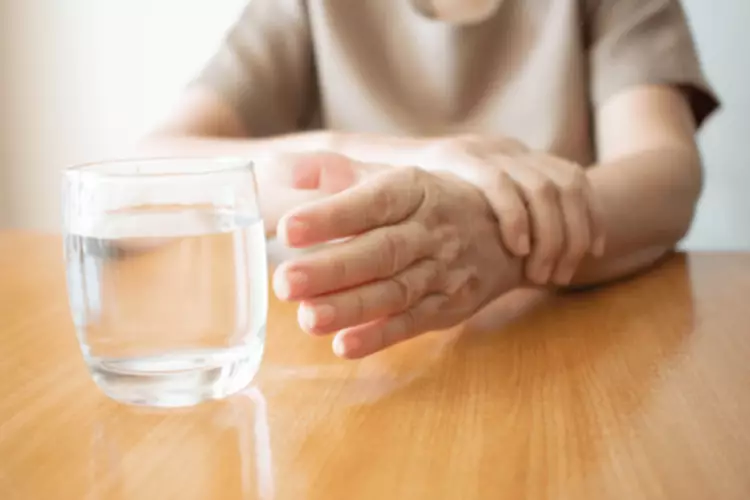
At this stage, it’s crucial to stay hydrated, rest, and seek medical attention if symptoms become severe. alcohol withdrawal syndrome symptoms We invite you to reach out and learn how our personalized care can support your healing and long-term recovery. Continuous cravings for alcohol and the high risk of relapse during withdrawal highlight the importance of a structured treatment environment. Professional support offers tools to manage these cravings effectively, reducing the likelihood of returning to alcohol use. Wernicke encephalopathy may occur in people who have a thiamine (vitamin B12) deficiency, a condition that is common among those addicted to alcohol. If you or a loved one drinks heavily or has an alcohol use disorder (AUD), it can be dangerous to go through the withdrawal process alone.
Dangers and Long-Term Effects of Ecstasy Use
Substance withdrawal is the process the body goes through after discontinuing or reducing the amount of an addictive substance (e.g., nicotine, alcohol, opiates, and other drugs). An inpatient detox program refers to a facility within the treatment center that provides 24/7 support from medical staff during your rehabilitation. After treatment, you’ll be invited to continue care by choosing a rehab program. These programs offer ample support through one-on-one therapy for alcoholism or addiction therapy, family therapy, group therapy, and support groups.
- Facing alcohol withdrawal can be daunting and challenging, but knowing what to expect can ease some of the uncertainty.
- This can be a sign of significant withdrawal, which needs medical intervention.
- As you experience the stages of withdrawal, a medical detox program can support your needs to help manage symptoms and keep you comfortable.
- Over time, repeated use of ecstasy trains the brain to rely on the drug for happiness and pleasure, making it harder for the brain to produce these feelings naturally.
What Is Acute Alcohol Withdrawal?
The duration of alcohol withdrawal symptoms can vary depending on several factors. Understanding these factors is essential in providing appropriate support and treatment to individuals going through this challenging process. In conclusion, the duration of alcohol withdrawal symptoms can vary depending on individual factors such as the level of alcohol dependence, overall health, and lifestyle. While the acute symptoms typically subside within a week, late symptoms and post-acute withdrawal syndrome (PAWS) can persist for several weeks or months. Seeking medical attention, employing self-care strategies, and engaging in ongoing support and treatment are essential components of effectively managing alcohol withdrawal and achieving lasting recovery. Individuals with co-occurring mental health conditions, such as anxiety or depression, may experience more prolonged and severe alcohol withdrawal symptoms.
Withdrawal Symptoms by Drug Type

The length and severity of alcohol withdrawal symptoms depend on your particular situation. There is, however, a general alcohol withdrawal timeline divided into 3 stages – mild, moderate, severe. The American Academy of Family Physicians outlines the appearance of withdrawal symptoms into 4 time stages.
- When you stop drinking alcohol, your body may go through an uncomfortable process called alcohol withdrawal syndrome (AWS).
- Abruptly stopping or decreasing an antidepressant may also cause a relapse of anxiety or depression symptoms.
- The negative impact on the body for chronic abusers is significant and often dangerous.
- However, if they crave alcohol and are unable to get through an evening without it easily, this may be an addiction.
What are common symptoms of withdrawal?
After the detox process, continuing treatment with groups such as Alcoholics Anonymous Halfway house or Narcotics Anonymous is recommended to stay substance-free. While most symptoms of nicotine withdrawal are not life-threatening, nicotine may increase symptoms of depression and anxiety for some time. In severe cases, alcohol withdrawal can lead to delirium tremors, which can cause seizures, among other significant symptoms.
A healthcare provider can prescribe medications that can help you manage symptoms such as shakes, anxiety, and insomnia. Those who sought help from their healthcare providers and were given medications to alleviate their symptoms reported milder, shorter-lived symptoms overall than those who quit on their own. However, as the first day continues and hangover symptoms subside, actual alcohol withdrawal symptoms set in, especially for daily drinkers.

This depletion can result in feelings of sadness, fatigue, and confusion. Over time, repeated use of ecstasy trains the brain to rely on the drug for happiness and pleasure, making it harder for the brain to produce these feelings naturally. Large amounts of sweat exiting your body can be unsettling, interfering with your peace of mind and the comfortable sleep your body is crying out for. In addition to the nerves and anxieties you may feel in withdrawal, being drenched in sweat can make you feel self-conscious and unhygienic. This article explores the link between detox and sweating, helping you understand why it happens and offering practical tips to manage it, supporting a comfortable, complete recovery. There is also the option to enter an outpatient treatment program, which provides the same therapy options while allowing you to stay at your home instead of at the facility.
However, it’s likely recommended that you access a professional detox program where medical professionals can monitor your symptoms carefully. Fortunately, our substance abuse rehab facilities at Ark Behavioral Health offer medically supervised alcohol detox. This type of detox program provides professional support as you go through alcohol withdrawal. If you drink regularly then suddenly stop, you’ll likely experience alcohol withdrawal symptoms within six to twelve hours of your last drink. If you don’t drink heavily, these symptoms may pass in as little as 48 hours. Alcohol enhances GABA’s calming effects while suppressing glutamate, leading to long-term neuroadaptation.
Medication-Assisted Treatment

After 12 hours, a small percentage of people may experience hallucinations. Those who do not experience hallucinations will have worsening symptoms of anxiety, insomnia, sweating, and high blood pressure. Between hours 6 and 12, you may experience headaches, anxiety, insomnia, loss of appetite, and alcohol cravings. These symptoms will continue to progress as time goes on, however, they are not severe at this point in time. Quitting drinking is certainly scary, especially if you are expecting to go into withdrawal. How long alcohol withdrawal lasts depends on a variety of factors, such as how long you’ve been drinking, how often you drink, and whether or not you’ve gone through withdrawal before.
- While most symptoms of nicotine withdrawal are not life-threatening, nicotine may increase symptoms of depression and anxiety for some time.
- Too much noise, light, or activity can worsen anxiety when your nervous system is already struggling to find balance.
- Understanding these symptoms and how long they can last is important for managing AWS and overall recovery.
Getting Sleep, Dealing With Cravings
This adverse effect on your mental health can be hard on the body as well. Most people experience alcohol dependence with heavy use and experience physical symptoms when they stop drinking. Individuals with long-term heavy drinking histories experience accelerated withdrawal onset due to significant neurochemical adaptations. More severe symptoms, such as hallucinations and seizures, develop within 24 to 72 hours, while delirium tremens (DTs) appears between 48 to 96 hours. The timing of withdrawal is influenced by age, liver function, and co-existing health conditions. However, for some, the physical symptoms will continue even after seven days.
